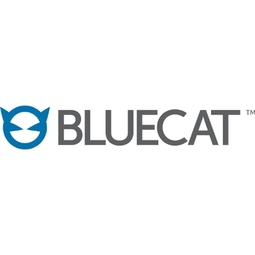Download PDF
Case Study: Medical Technology Company
Technology Category
- Application Infrastructure & Middleware - API Integration & Management
Applicable Industries
- Healthcare & Hospitals
Applicable Functions
- Maintenance
- Field Services
Use Cases
- Remote Asset Management
- Predictive Maintenance
Services
- System Integration
The Challenge
The medical technology company faced several challenges in managing network connections between medical devices deployed in the field and the company’s service staff. The company had to ensure compliance with the Health Insurance Portability and Accountability Act (HIPAA), which required all connections between medical devices and the company’s servers to be encrypted. This involved creating and managing separate VPN tunnels for over 15,000 field-deployed devices. The company also faced network conflicts as the devices relied on the IT infrastructures of the medical centers and clinics where they were deployed. The devices were assigned IP addresses by the network teams of each facility, usually without any coordination. This introduced the potential that devices in different facilities would be assigned the same IP address, making remote monitoring and maintenance much harder to track. The company’s network infrastructure was complex due to multiple mergers, acquisitions, strategic initiatives, and partnerships. Maintaining visibility into the DNS of this complex enterprise was a significant challenge.
About The Customer
The customer is a leading medical technology company with nearly $20 billion in annual revenue and over 70,000 employees around the world. The company’s primary business is supplying hospitals and clinics with a wide variety of medical devices. All of the company’s medical devices require periodic maintenance. In the past, it employed a large team of Field Service Engineers which visited medical facilities on a set schedule to service and troubleshoot devices. In recent years, the company decided to connect all of its devices to the internet, enabling remote diagnostics and updates. This allows a smaller number of Field Service Engineers to effectively maintain a larger fleet of devices.
The Solution
To address its many DNS-related challenges, the company turned to BlueCat. Working with BlueCat’s migration team, the company transitioned its scattered on-prem DNS resources from Microsoft to DNS Integrity. A significant part of the migration effort involved bringing legacy systems and namespaces under a single DNS administration portal, organizing and accounting for dispersed data sets across the enterprise. This laid the foundation for the company to tackle the larger challenge of managing its connections to devices in the field. Using DNS Integrity’s robust API, the company’s application development team then built a custom portal to manage remote devices through the BlueCat back-end. This portal uses Network Address Translation (NAT) and a Dynamic Multipoint Virtual Private Network (DMVPN), automatically integrating host records from remote devices with the BlueCat Address Manager.
Operational Impact
Quantitative Benefit
Related Case Studies.

Case Study
Hospital Inventory Management
The hospital supply chain team is responsible for ensuring that the right medical supplies are readily available to clinicians when and where needed, and to do so in the most efficient manner possible. However, many of the systems and processes in use at the cancer center for supply chain management were not best suited to support these goals. Barcoding technology, a commonly used method for inventory management of medical supplies, is labor intensive, time consuming, does not provide real-time visibility into inventory levels and can be prone to error. Consequently, the lack of accurate and real-time visibility into inventory levels across multiple supply rooms in multiple hospital facilities creates additional inefficiency in the system causing over-ordering, hoarding, and wasted supplies. Other sources of waste and cost were also identified as candidates for improvement. Existing systems and processes did not provide adequate security for high-cost inventory within the hospital, which was another driver of cost. A lack of visibility into expiration dates for supplies resulted in supplies being wasted due to past expiry dates. Storage of supplies was also a key consideration given the location of the cancer center’s facilities in a dense urban setting, where space is always at a premium. In order to address the challenges outlined above, the hospital sought a solution that would provide real-time inventory information with high levels of accuracy, reduce the level of manual effort required and enable data driven decision making to ensure that the right supplies were readily available to clinicians in the right location at the right time.

Case Study
Gas Pipeline Monitoring System for Hospitals
This system integrator focuses on providing centralized gas pipeline monitoring systems for hospitals. The service they provide makes it possible for hospitals to reduce both maintenance and labor costs. Since hospitals may not have an existing network suitable for this type of system, GPRS communication provides an easy and ready-to-use solution for remote, distributed monitoring systems System Requirements - GPRS communication - Seamless connection with SCADA software - Simple, front-end control capability - Expandable I/O channels - Combine AI, DI, and DO channels

Case Study
Driving Digital Transformations for Vitro Diagnostic Medical Devices
Diagnostic devices play a vital role in helping to improve healthcare delivery. In fact, an estimated 60 percent of the world’s medical decisions are made with support from in vitrodiagnostics (IVD) solutions, such as those provided by Roche Diagnostics, an industry leader. As the demand for medical diagnostic services grows rapidly in hospitals and clinics across China, so does the market for IVD solutions. In addition, the typically high cost of these diagnostic devices means that comprehensive post-sales services are needed. Wanteed to improve three portions of thr IVD:1. Remotely monitor and manage IVD devices as fixed assets.2. Optimizing device availability with predictive maintenance.3. Recommending the best IVD solution for a customer’s needs.

Case Study
HaemoCloud Global Blood Management System
1) Deliver a connected digital product system to protect and increase the differentiated value of Haemonetics blood and plasma solutions. 2) Improve patient outcomes by increasing the efficiency of blood supply flows. 3) Navigate and satisfy a complex web of global regulatory compliance requirements. 4) Reduce costly and labor-intensive maintenance procedures.

Case Study
Harnessing real-time data to give a holistic picture of patient health
Every day, vast quantities of data are collected about patients as they pass through health service organizations—from operational data such as treatment history and medications to physiological data captured by medical devices. The insights hidden within this treasure trove of data can be used to support more personalized treatments, more accurate diagnosis and more advanced preparative care. But since the information is generated faster than most organizations can consume it, unlocking the power of this big data can be a struggle. This type of predictive approach not only improves patient care—it also helps to reduce costs, because in the healthcare industry, prevention is almost always more cost-effective than treatment. However, collecting, analyzing and presenting these data-streams in a way that clinicians can easily understand can pose a significant technical challenge.






